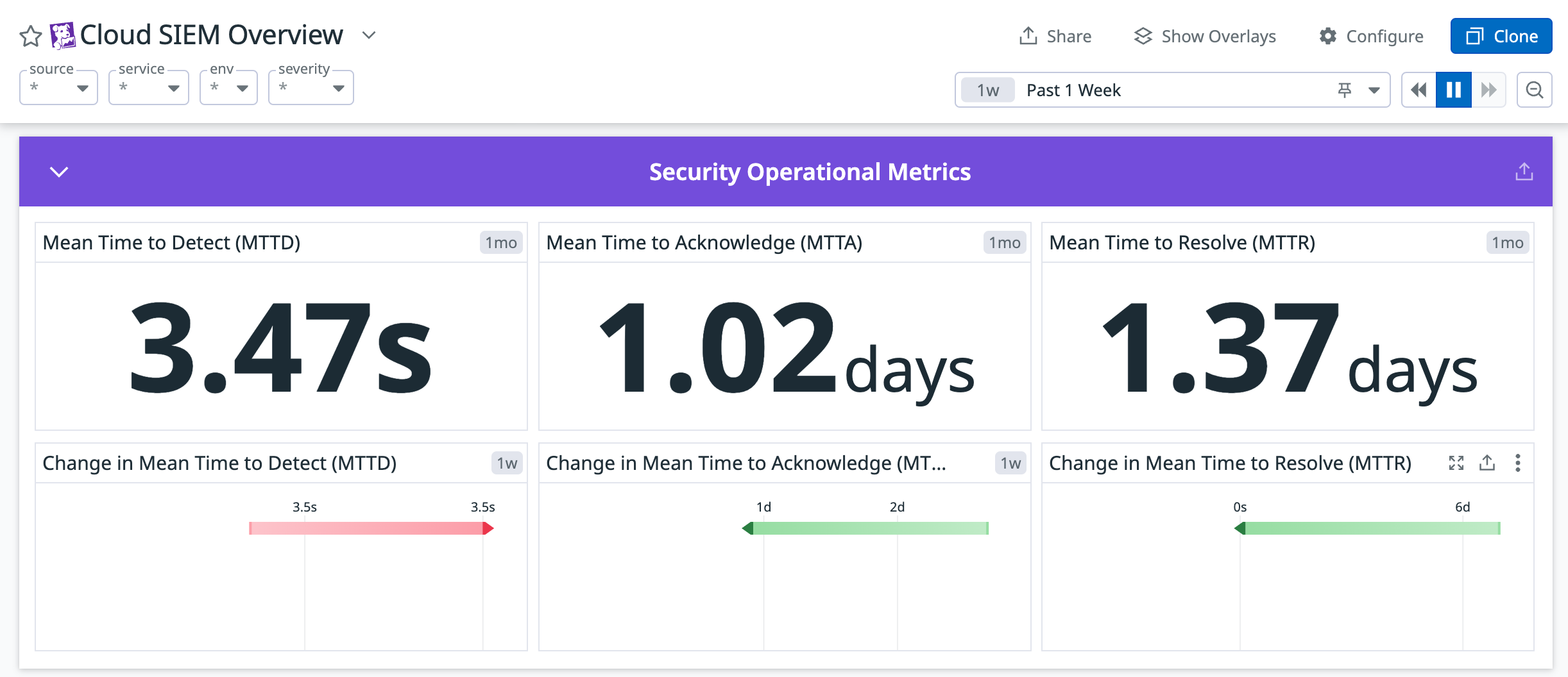- Essentials
- Getting Started
- Agent
- API
- APM Tracing
- Containers
- Dashboards
- Database Monitoring
- Datadog
- Datadog Site
- DevSecOps
- Incident Management
- Integrations
- Internal Developer Portal
- Logs
- Monitors
- Notebooks
- OpenTelemetry
- Profiler
- Search
- Session Replay
- Security
- Serverless for AWS Lambda
- Software Delivery
- Synthetic Monitoring and Testing
- Tags
- Workflow Automation
- Learning Center
- Support
- Glossary
- Standard Attributes
- Guides
- Agent
- Integrations
- Developers
- Authorization
- DogStatsD
- Custom Checks
- Integrations
- Build an Integration with Datadog
- Create an Agent-based Integration
- Create an API-based Integration
- Create a Log Pipeline
- Integration Assets Reference
- Build a Marketplace Offering
- Create an Integration Dashboard
- Create a Monitor Template
- Create a Cloud SIEM Detection Rule
- Install Agent Integration Developer Tool
- Service Checks
- IDE Plugins
- Community
- Guides
- OpenTelemetry
- Administrator's Guide
- API
- Partners
- Datadog Mobile App
- DDSQL Reference
- CoScreen
- CoTerm
- Remote Configuration
- Cloudcraft (Standalone)
- In The App
- Dashboards
- Notebooks
- DDSQL Editor
- Reference Tables
- Sheets
- Monitors and Alerting
- Watchdog
- Metrics
- Bits AI
- Internal Developer Portal
- Error Tracking
- Change Tracking
- Service Management
- Service Level Objectives
- Incident Management
- On-Call
- Status Pages
- Event Management
- Case Management
- Actions & Remediations
- Infrastructure
- Cloudcraft
- Resource Catalog
- Universal Service Monitoring
- End User Device Monitoring
- Hosts
- Containers
- Processes
- Serverless
- Network Monitoring
- Storage Management
- Cloud Cost
- Application Performance
- APM
- Continuous Profiler
- Database Monitoring
- Agent Integration Overhead
- Setup Architectures
- Setting Up Postgres
- Setting Up MySQL
- Setting Up SQL Server
- Setting Up Oracle
- Setting Up Amazon DocumentDB
- Setting Up MongoDB
- Connecting DBM and Traces
- Data Collected
- Exploring Database Hosts
- Exploring Query Metrics
- Exploring Query Samples
- Exploring Database Schemas
- Exploring Recommendations
- Troubleshooting
- Guides
- Data Streams Monitoring
- Data Jobs Monitoring
- Data Observability
- Digital Experience
- Real User Monitoring
- Synthetic Testing and Monitoring
- Continuous Testing
- Product Analytics
- Software Delivery
- CI Visibility
- CD Visibility
- Deployment Gates
- Test Optimization
- Code Coverage
- PR Gates
- DORA Metrics
- Feature Flags
- Security
- Security Overview
- Cloud SIEM
- Code Security
- Cloud Security
- App and API Protection
- Workload Protection
- Sensitive Data Scanner
- AI Observability
- Log Management
- Administration
Security Operational Metrics
Overview
Cloud SIEM provides security operational metrics to help you determine the effectiveness of your team in responding to and resolving security threats to your cloud environments. These metrics are shown in the out-of-the-box Cloud SIEM dashboard and are sent in the Cloud SIEM weekly digest reports. You can also create dashboards and monitors for them.
Operational metrics
datadog.security.siem_signal.time_to_detect- Name: Time to Detect (TTD)
- Description: The time (in seconds) between when a matching log is triggered and when a signal is generated.
- Metric type: DISTRIBUTION
datadog.security.siem_signal.time_to_acknowledge- Name: Time to Acknowledge (TTA)
- Description: The time (in seconds) between when a signal is triggered and when an investigation on the signal begins.
- Metric type: DISTRIBUTION
datadog.security.siem_signal.time_to_resolve- Name: Time to Resolve (TTR)
- Description: The time (in seconds) it takes to close a signal starting from the time when you are first notified of the detection.
- Metric type: DISTRIBUTION
How the metrics are calculated
The TTD, TTA, and TTR metrics are calculated based on these timestamps:
- The timestamp (
T0) of the log that triggers a security signal. - The timestamp (
T1) of when the signal is generated. - The timestamp (
T2) of when the signal status is changed tounder_review. - The timestamp (
T3) of when the signal status is changed toarchived.
| Metric | How the metric is calculated |
|---|---|
Time to Detect (TTD)datadog.security.siem_signal.time_to_detect | T1 - T0 |
Time to Acknowledge (TTA)datadog.security.siem_signal.time_to_acknowledge | T2 - T1 |
Time to Resolve (TTR)datadog.security.siem_signal.time_to_resolve | T3 - T1 |
Explore, visualize, and monitor the metrics
Use the Metrics Summary to see metadata and tags for the operational metrics. You can also see which dashboards, notebooks, monitors, and SLOs are using those metrics.
Use tags to filter the metrics to specific teams, sources, and environments. You can then create dashboards for those metrics to visualize the data or create monitors to alert you if the metrics exceed a specified threshold.
Further reading
Additional helpful documentation, links, and articles:

